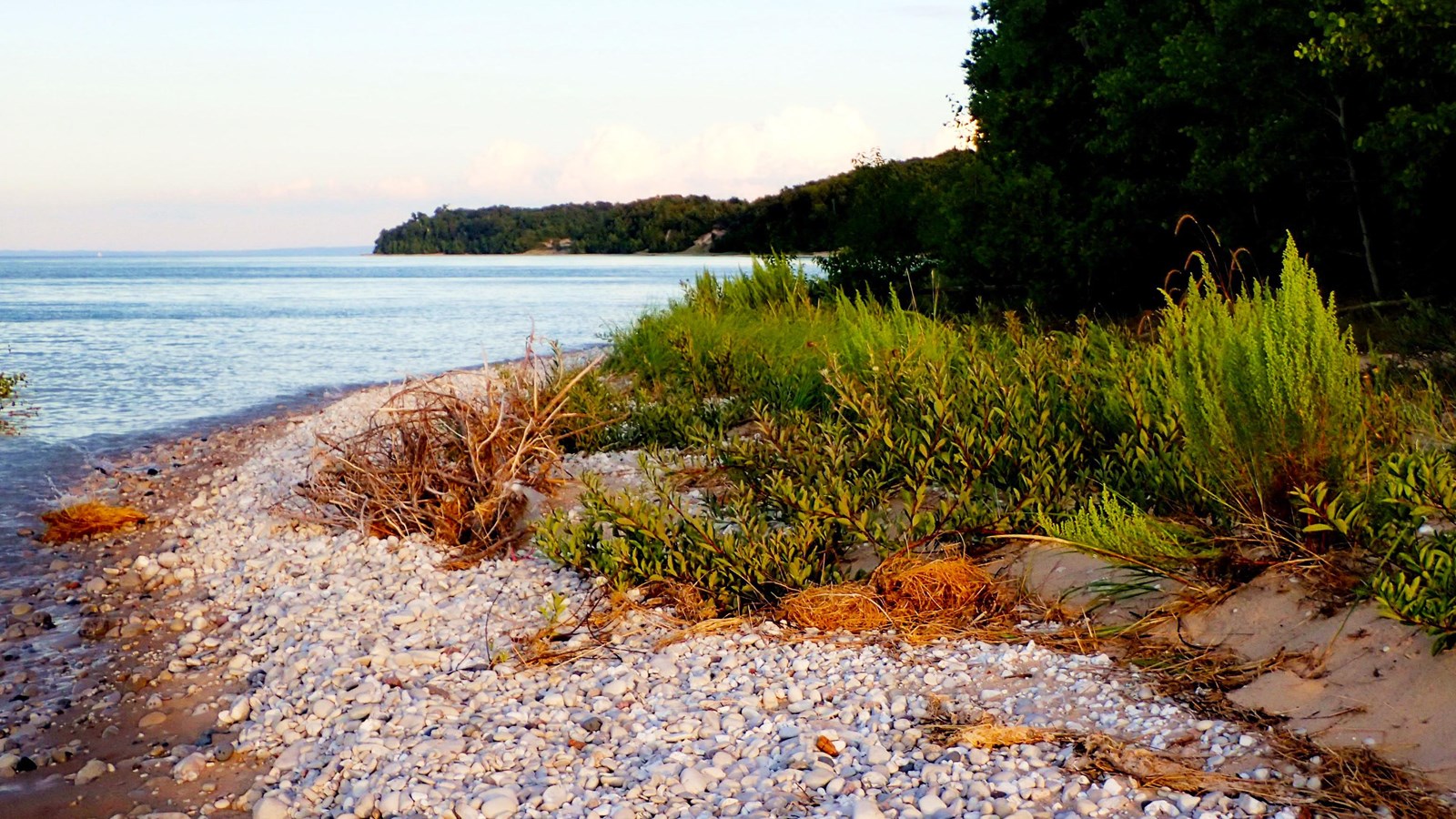Last updated: June 1, 2021
Place
South Manitou Island Dock

NPS credit
Today a trip to South Manitou Island can feel like visiting a ghost town. Yet less than a century ago, this island was a bustling logging, farming, and maritime community. Native Americans used South Manitou seasonally for fishing and hunting. They were followed by the first permanent settlers, who began to arrive in the 1830s.
The island's location along a major shipping channel, the Manitou Passage, and its deep harbor made it a logical place to seek refuge during bad weather. Steamships also needed to refuel with wood cut from the island's forests. Some of South Manitou Island's very first permanent settlers made a living cutting and selling cord word to passing steamships. Logging also soon became a profitable business.
Once many of the island's hardwood forests were cleared, islanders made a living by farming and fishing. With the increase of commerce and shipping in the area, shipwrecks began to occur at a higher frequency.
In order to provide aid to mariners, the federal government provided funds for the construction of the first South Manitou Island Lighthouse in 1839 and a United States Life-Saving Service Station in 1901. The men of the Lighthouse and Life-Saving Service and their families quickly became a part of the small island community.
South Manitou Island was a close-knit, interdependent community. Everyone on the island knew everybody else. Admiral Willard Smith grew up on the island in the 1920s; and according to Admiral Smith, "growing up on SMI was probably the greatest experience a youngster could have. You had an island with a nice little lake in the middle of it, sand hills and woods, that was your backyard. You could go anyplace you wanted and do anything you wanted to do, and it was a great place to be a small boy.
The island children liked to watch the beach cart drill, the firing of the little cannon. The children had to stay out of the way as the crew set up the drill, but they would let the children ride down on the beaches buoy once in a while. The surfmen taught the children about signaling, how to tie knots and hand lines, and how to make bow and arrows.
